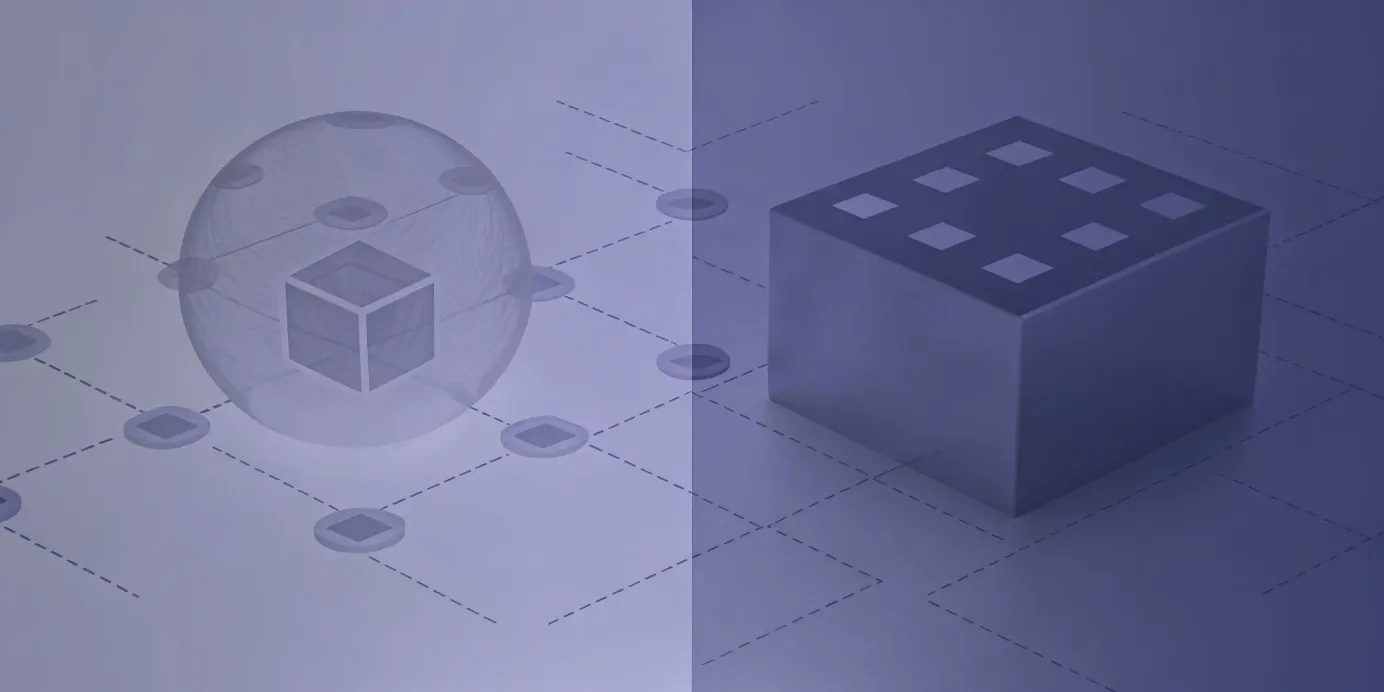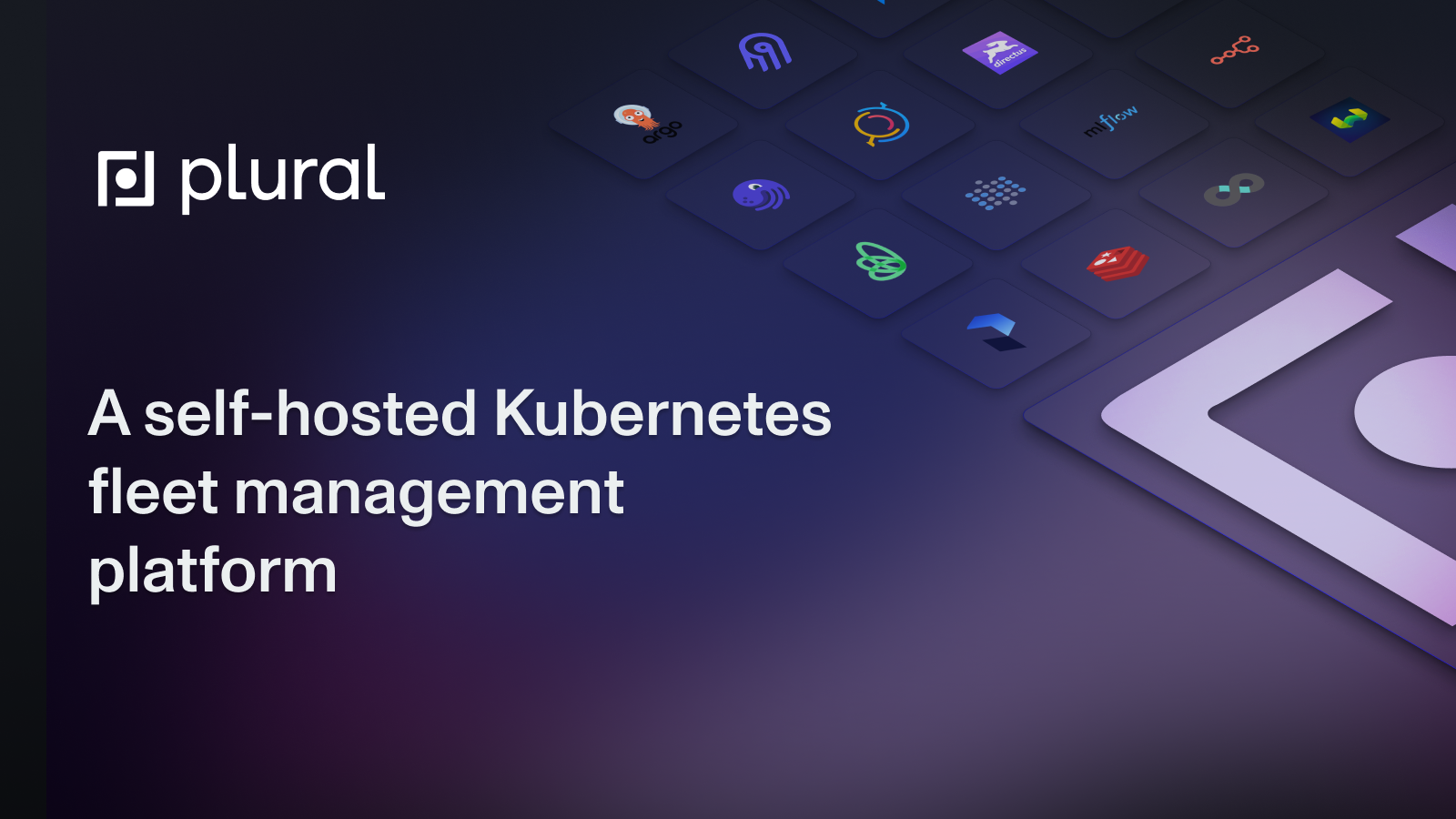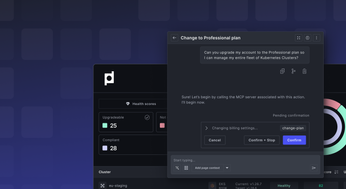
Kubernetes Pod vs. Container: Understanding the Difference
Understand the key differences between Kubernetes pods and containers, and learn how they work together to optimize your application deployment.
Kubernetes, the popular container orchestration platform, relies on a few key concepts. Two of the most fundamental are containers and pods. While often used interchangeably, they represent distinct entities with specific roles in the Kubernetes ecosystem. Newcomers to Kubernetes often find themselves puzzling over the difference between a Kubernetes Pod vs. Container.
This article clarifies the distinction, explaining what containers and pods are, how they relate to each other, and why understanding their differences is crucial for effectively deploying and managing applications on Kubernetes. We'll explore their individual functionalities, compare their scope, and delve into advanced concepts like init containers, ephemeral containers, and pod disruption budgets. Finally, we'll offer practical guidance on troubleshooting, optimizing, and securing your pods and containers.
Unified Cloud Orchestration for Kubernetes
Manage Kubernetes at scale through a single, enterprise-ready platform.
Key Takeaways
- Kubernetes pods are the smallest deployable units, encapsulating one or more containers. They share resources like networking and storage, simplifying inter-container communication, and dependency management. Design pods with resource requirements and container relationships in mind.
- Managing the pod lifecycle involves creation, scaling, and termination. Leverage init containers for pre-application setup, ephemeral containers for live debugging, and Pod Disruption Budgets for service availability during disruptions. Monitor resource usage and logs for optimal performance.
- Secure your pods and containers with RBAC, network policies, and image scanning. Control access to cluster resources, manage inter-pod traffic and ensure image integrity for a robust security posture.
What Are Containers in Kubernetes?
Containers are fundamental to how Kubernetes operates, packaging and running software. Understanding them is key to effectively using Kubernetes.
Definition and Purpose
Containers are lightweight, standalone packages of software that include everything needed to run an application: code, runtime, system tools, system libraries, and settings. They're designed to be portable and consistent across different computing environments. Think of them as self-contained units, isolating the software from the underlying infrastructure. This isolation ensures that an application behaves the same way, regardless of where it's deployed, simplifying development and deployment. Docker is a popular containerization technology.
Key Components of a Container
A container image is a read-only template used to create containers. It contains the application code, libraries, dependencies, and other files needed to run the software. Container images are built in layers, making them efficient to store and distribute. When a container is created from an image, a writable layer is added on top, allowing changes made during the container's operation to be saved without altering the original image. This layered approach simplifies version control and updates.
The container runtime is the software responsible for running containers. It manages the container's lifecycle, including starting, stopping, and resource allocation. Popular container runtimes include containerd and CRI-O. Kubernetes interacts with the container runtime through the Container Runtime Interface (CRI), an industry standard that allows Kubernetes to support different runtimes.
Container Runtimes and Images
Kubernetes uses container runtimes to manage the lifecycle of containers. The container runtime is responsible for pulling the container image from a container registry, starting the container, and managing its resources (CPU, memory, storage). Kubernetes supports multiple container runtimes through the CRI, giving users flexibility in their choice of runtime. The image itself acts as the blueprint for the container, defining the application and its dependencies. This separation of image and runtime allows for greater portability and flexibility in managing containerized applications.
What Are Kubernetes Pods?
Definition of a Pod
In Kubernetes, a Pod is the smallest deployable unit of compute. Think of it like a "pod" of whales or a pea pod—a group of one or more containers sharing resources and operating together. These containers within a pod share a network namespace, storage, and other resources and are always co-located and co-scheduled on the same node. A pod's specification dictates how these containers should run. This makes pods the fundamental building blocks for deploying and managing containers in Kubernetes.
Pod Composition and Structure
Pods consist of one or more containers, a shared network namespace, and storage volumes. The containers within a pod are tightly coupled and share resources like filesystems and network interfaces. This close relationship allows containers within a pod to communicate efficiently and share data easily. The pod itself is managed by the Kubernetes control plane, ensuring its containers are running and healthy. You can find more details on managing the pod lifecycle in our documentation.
Single vs. Multi-Container Pods
While a container always runs a single application, a pod can contain multiple containers. This design enables related applications to run together and share resources. The most common scenario is a main application container accompanied by "sidecar" containers. These sidecars provide supporting services like logging, networking, or data management. For example, a web server container might have a sidecar container that collects logs or manages configuration files. This separation of concerns simplifies the main application container and improves its maintainability. For simpler deployments, a pod can contain just a single container, abstracting away the underlying container runtime from the user. For more complex scenarios, explore common pod patterns like sidecar, ambassador, and adapter.
Comparing Kubernetes Pods and Containers
Now that we’ve defined containers and pods, let's compare them to clarify their relationship and highlight their key differences.
Scope and Functionality
A pod is a collection of one or more containers, acting as the smallest deployable unit in Kubernetes. Think of a pod as a logical host for your containers, providing a shared environment and resources. This contrasts with containers, which operate in their own isolated environments. Pods simplify application deployment by grouping related containers, enabling them to work together seamlessly. For example, a web application container might be paired with a logging sidecar container within the same pod, facilitating centralized log collection. This co-location simplifies inter-container communication and dependency management.
Resource Allocation and Sharing
Pods manage resource allocation for their constituent containers. All containers within a pod share the same resources, including CPU, memory, and network namespace. This resource sharing model simplifies management and ensures efficient utilization. For instance, if you allocate 1GB of memory to a pod containing two containers, those containers will share that 1GB allocation. Similarly, storage volumes defined at the pod level are accessible to all containers within that pod. This shared filesystem simplifies data exchange and collaboration between containers.
Networking and Communication
One of the most significant differences between pods and containers lies in their networking model. Each pod receives a unique IP address, enabling communication with other pods and services within the cluster. Containers within a pod share the same network namespace, effectively residing on the same virtual network interface. This means containers within a pod can communicate with each other using localhost, simplifying inter-container communication. This shared network namespace also allows containers to share network resources and access shared storage volumes. This contrasts with containers in different pods, which must use their respective pod IP addresses for communication.
Manage the Kubernetes Pod Lifecycle
Managing the pod lifecycle involves creating, scaling, and terminating pods efficiently. Understanding these stages is crucial for maintaining a healthy and scalable Kubernetes deployment.
Create and Deploy Pods
You define pods declaratively using YAML or JSON, specifying the desired state, including container images, kubectl apply -f pod.yaml to create a pod based on your configuration file. Kubernetes then schedules the pod onto a suitable node in the cluster. If a node lacks sufficient resources, the entire pod remains unscheduled. This emphasizes the importance of accurate resource requests and limits in your pod definitions.
Scale and Replicate Pods
Scaling pods allows your application to handle varying loads. Kubernetes supports horizontal pod autoscaling (HPA), automatically adjusting the number of pod replicas based on metrics like CPU utilization or custom metrics. You define the desired scaling behavior in an HPA resource, specifying the target metric and the minimum and maximum number of replicas. As load increases, Kubernetes creates new pod replicas to distribute the traffic. Conversely, as load decreases, Kubernetes terminates excess replicas to conserve resources. This dynamic scaling ensures your application remains responsive while minimizing costs. While you can manually scale using kubectl scale, HPA offers a more automated and resilient approach.
Terminate and Clean Up Pods
Terminating pods gracefully is essential for preventing data loss and ensuring application stability. Kubernetes offers several termination methods, including deleting the pod directly with kubectl delete pod <pod-name>. This triggers a controlled shutdown, allowing applications to finish processing requests. You can also use kubectl drain <node-name> to evict all pods from a node before maintenance or upgrades. This command respects pod disruption budgets, ensuring a minimum number of replicas remain available. Kubernetes restart policies dictate how containers within a pod should be restarted in case of failures. Understanding these policies is crucial for maintaining application availability.
Orchestrate Containers within Kubernetes Pods
In Kubernetes, containers aren't deployed directly onto a node. Kubernetes schedules pods as a unit, ensuring that all containers within a pod run on the same node. This co-location simplifies inter-container communication and dependency management. If a node lacks sufficient resources for all containers in a pod, the entire pod remains unscheduled.
Communicate Between Containers
One of the primary benefits of grouping containers within a pod is seamless communication. All containers in a pod share the same network namespace, effectively residing on the same virtual network. This means they can address each other using localhost and communicate directly without complex network configurations. This shared network namespace simplifies service discovery and inter-service communication within a pod. A pod receives a unique IP address, allowing its constituent containers to communicate with each other and other pods in the cluster. This shared networking environment streamlines interactions between application components deployed within the same pod.
Share Storage and Volumes
Besides networking, pods facilitate storage sharing among containers. Pods provide a mechanism for mounting shared storage volumes accessible to all containers within the pod. This shared storage enables data exchange and collaboration between containers. While containers within a pod share resources like networking and storage, they maintain process-level isolation. This isolation ensures that one container's failure doesn't directly impact others within the same pod, enhancing application resilience. This balance of shared resources and process isolation makes pods a powerful construct for deploying complex applications.
Common Pod Patterns: Sidecar, Ambassador, and Adapter
Pods enable various deployment patterns that leverage the benefits of co-located containers. The sidecar pattern involves deploying a helper container alongside the main application container. This sidecar container provides supporting functions like logging, monitoring, or configuration management, augmenting the main application's functionality without modifying its code.
Another common pattern is the ambassador pattern, where a proxy container acts as an intermediary for the main application container, handling tasks like routing, security, or protocol translation. This pattern simplifies communication between the application and external services.
The adapter pattern uses a sidecar container to standardize the output of the main application container, making it compatible with external systems or services. This pattern facilitates integration with legacy systems or services that require specific data formats. These patterns, and others like them, demonstrate the flexibility and power of pods in orchestrating complex application deployments.
Kubernetes Pod Use Cases and Best Practices
Choose Between Individual Containers and Pods
While a pod can contain a single container, it's designed to hold one or more containers that share a lifecycle and resources. This distinction is crucial for choosing the right approach. If your application is a simple, self-contained process, a single-container pod is sufficient. However, for applications requiring supporting processes like logging, monitoring, or a sidecar proxy, a multi-container pod becomes essential, managing these related containers as a single unit. They are scheduled together, share the same network namespace, and communicate easily via localhost.
Design Considerations for Pods
When designing pods, carefully consider the relationships between your containers. Pods excel at grouping containers that perform complementary functions. A common pattern is a main application container paired with a sidecar container. The sidecar might handle logging, forward network traffic, or provide a service mesh, promoting modularity and separation of concerns. For example, a web server container could be paired with a logging sidecar that collects and forwards logs to a centralized system. Because containers within a pod share an IP address and communicate using localhost, inter-container communication is efficient. This tight integration simplifies application development and deployment. If you're unsure whether to use a single or multi-container pod, start with a single container and refactor into a multi-container pod as your application evolves.
Optimize Pod Resources
Resource management is critical for pod design. Each container within a pod requires resources like CPU and memory. Kubernetes schedules pods as a unit. If a node lacks sufficient resources for all containers in a pod, the entire pod remains unscheduled. Accurately defining resource requests and limits for each container is therefore essential. Requests guarantee a minimum level of resources, while limits prevent excessive resource consumption, impacting other workloads. Proper resource allocation ensures efficient cluster capacity utilization and prevents resource starvation. Tools like the kubectl describe pod command help understand resource usage and identify potential bottlenecks. By carefully considering resource requirements and utilizing monitoring tools, you can optimize pod performance and ensure cluster stability.
Advanced Kubernetes Pod Concepts
This section covers advanced pod concepts that provide greater control over container initialization, debugging, and availability in Kubernetes.
Init Containers
Init containers are specialized containers that run before the main application containers in a pod. They perform initialization tasks, such as setting up the environment, waiting for external services, or populating required files. This separation ensures that the main application containers start only when the necessary prerequisites are met. Unlike regular containers, init containers always run to completion, and each must complete successfully before the next one starts. This provides a predictable startup process.
Ephemeral Containers
Ephemeral containers provide a powerful mechanism for debugging and troubleshooting running pods without restarting or rebuilding them. These temporary containers are dynamically added to a pod and share the same network namespace and process space as the other containers. This allows you to execute diagnostic commands, inspect the file system, and analyze network traffic within the context of the running pod. Ephemeral containers are particularly useful for investigating issues in production environments without disrupting the application.
Pod Disruption Budgets
Pod Disruption Budgets (PDBs) help ensure the availability and resilience of your applications by limiting the number of pods that can be disrupted simultaneously during voluntary disruptions like cluster upgrades or node maintenance. A PDB defines the minimum number or percentage of pods that must remain available at any given time. This prevents cascading failures and ensures that your application continues to function even when some pods are unavailable. For mission-critical applications, PDBs are essential for maintaining service levels.
Troubleshoot and Optimize Kubernetes Pod Performance
As Kubernetes becomes central to application deployment and scaling, platform engineers face the ongoing challenge of ensuring optimal pod performance. Inefficient resource use can lead to significantly higher operational costs, impacting both performance and budget.
Common Pod and Container Issues
Resource constraints are a frequent source of pod performance issues. Over- or under-allocating CPU and memory can lead to instability and poor application responsiveness. Defining resource requests and limits in your pod specifications is crucial. Requests guarantee a baseline level of resources, while limits prevent excessive consumption. Regularly analyze resource usage metrics to fine-tune these settings and prevent resource starvation or waste. Another common issue stems from image pull failures. Verify image names and tags within your deployment specifications, check private registry access, and ensure your Kubernetes nodes have sufficient resources for image download and extraction.
Debug Pods and Containers
Effective debugging requires a combination of Kubernetes tools and best practices. kubectl describe pod provides detailed information about a pod's state, including events, resource usage, and container statuses. kubectl logs allows you to inspect container logs for application-specific errors. For deeper analysis, use kubectl exec to execute commands inside a running container. Platform teams should leverage these Kubernetes features and adopt GitOps practices with tools like Plural to automate deployments and streamline management tasks, reducing manual effort and minimizing errors.

Monitor and Log Effectively
Comprehensive monitoring and logging are essential for maintaining pod performance and application stability. While Kubernetes offers basic monitoring through metrics-server, consider implementing a dedicated monitoring solution like Prometheus or Datadog for more granular insights. Collect metrics on resource usage, pod restarts, and application performance indicators. Similarly, centralized logging with tools like Elasticsearch and Kibana allows you to aggregate and analyze logs from all your pods and containers, enabling faster identification of issues and trends. This comprehensive approach to monitoring and logging is crucial for ensuring optimal performance and navigating the complexities of modern infrastructure.
Secure Kubernetes Pods and Containers
Securing your pods and containers is critical for maintaining a robust and reliable Kubernetes cluster. This involves controlling access, managing network communication, and ensuring the integrity of the images themselves.
RBAC and Access Control
Kubernetes uses Role-Based Access Control (RBAC) to govern access to resources within the cluster. This system lets you define granular permissions for users and applications, dictating who can perform specific actions on particular resources. By implementing RBAC, you prevent unauthorized access to your pods and containers, limiting the potential impact of security breaches. For example, you can create roles that allow developers to deploy applications but restrict them from modifying cluster-wide settings. This separation of duties enhances security and helps maintain the stability of your environment.
Network Policies
Network policies provide a mechanism to control the flow of traffic between pods in your Kubernetes cluster. Think of them as firewalls for your pods. You can specify rules that dictate which pods can communicate with each other and even restrict traffic based on port numbers and protocols. By default, all pods can communicate with each other freely. Implementing network policies adds a layer of security by limiting communication to only necessary connections. This reduces the attack surface and prevents unauthorized access to sensitive services.
For instance, you might isolate a database pod so that only the application pods that require access can communicate with it. This segmentation limits the blast radius of potential compromises.
Secure Container Images
The security of your applications starts with the container images they run in. Using secure container images is paramount for protecting your Kubernetes workloads. This involves several key practices. First, regularly scan your images for vulnerabilities using tools like Trivy or Clair. These tools identify known security flaws in your image layers, allowing you to address them before deployment. Second, use trusted base images from reputable sources. Starting with a secure foundation minimizes the risk of introducing vulnerabilities.
Finally, establish policies to prevent the deployment of unverified images. This might involve integrating image scanning into your CI/CD pipeline and blocking deployments if vulnerabilities are detected.
Related Articles
- Kubernetes Terminology: A 2023 Guide
- Kubernetes Mastery: DevOps Essential Guide
- Runtime Security: Importance, Tools & Best Practices
- Kubernetes Pod: What Engineers Need to Know
- Kubernetes Pods: Practical Insights and Best Practices
Unified Cloud Orchestration for Kubernetes
Manage Kubernetes at scale through a single, enterprise-ready platform.
Frequently Asked Questions
What's the difference between a Kubernetes pod and a container?
A container is a standalone package of software, while a pod is a group of one or more containers deployed together on the same node. Pods provide a shared environment for containers, including networking and storage, simplifying communication and resource management. Think of a pod as a logical host for your containers.
How do I troubleshoot performance issues with my pods?
Start by examining resource allocation. Use kubectl describe pod to check resource usage and ensure your requests and limits are appropriate. Inspect container logs with kubectl logs for application-specific errors. For deeper analysis, use kubectl exec to run commands inside a container. Consider implementing dedicated monitoring and logging solutions for more comprehensive insights.
What are some common pod design patterns?
The sidecar pattern involves deploying a helper container alongside your main application container to provide supporting functions like logging or monitoring. The ambassador pattern uses a proxy container to handle routing or security. The adapter pattern uses a sidecar to standardize output for compatibility with external systems.
How can I secure my pods and containers?
Implement Role-Based Access Control (RBAC) to restrict access to cluster resources. Use network policies to control traffic flow between pods, acting as firewalls within your cluster. Ensure your container images are secure by regularly scanning for vulnerabilities and using trusted base images.
What are init containers, and how are they useful?
Init containers run before the main application containers in a pod, performing setup tasks like environment configuration or waiting for external services. They ensure that the main application containers start only when the necessary prerequisites are met, providing a predictable startup process.
Newsletter
Join the newsletter to receive the latest updates in your inbox.










